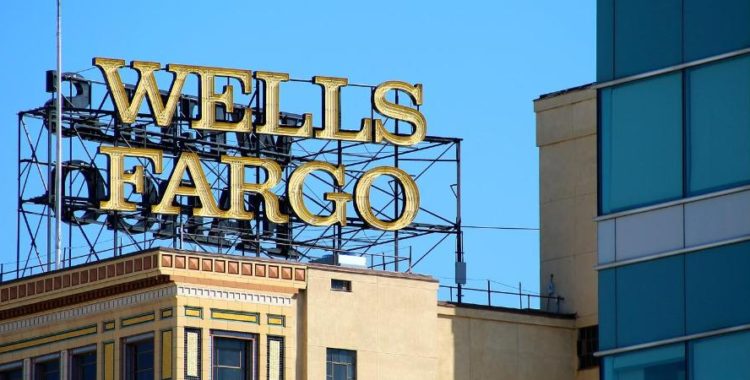A Bear Among Bulls: Someone on Wall Street has a Clue
Here is a great article from the WSJ about an analyst who thinks the market may have a pull back with commentary from attorney Scott Weitz.
Gina Martin Adams is out on a limb. The strategist at Wells Fargo Securities is the only stock-market guru at a major Wall Street firm calling for U.S. shares to slump.
The only stock market guru calling for US Shares to slump! Are you kidding? What type of fantasy land does Wall Street live in after we've done nothing but go up the past few years. More comments to follow on why this advice should not be 'brushed off'.
— Scott Weitz
Gina Martin Adams of the San Francisco bank has been close in her S&P 500 calls the last two years.
She is sticking with a call made earlier this year that the S&P 500-stock index will end 2013 at 1440. That would mean a 14% decline over the next three and a half months, all but wiping out this year’s gains. Ms. Adams reasons that once the Federal Reserve begins to pull back on its stimulus efforts, the stock market will lose a crucial source of support amid soft earnings growth.
Ms. Adams' reasons that once the Federal Reserve begins to pull back on its stimulus efforts, the stock market will lose a crucial source of support amid soft earnings growth. She is exactly right. The reality is the market has been propped up by the Fed since the crisis began with QE1, QE2, QE3, Operation Twist...all of which are fancy ways of saying that the Fed is going to print money and give to the Treasury, essentially increasing the capital the U.S. Government holds and the debt load of the U.S. While I believe this was arguably an appropriate Keynesian policy monetarily wise, it certainly did not allow true market forces to take place...it has been an era of 'quasi-capitalism'. In my opinion, the same problem that plagued us in 2007-2008, plagues us today -- and that is debt, at all levels of society (consumer, corporate, municipals and the Federal Government).
— Scott Weitz
In contrast, most other analysts predict that for the year, the S&P 500 will keep or exceed the 18% gain it has posted in 2013 to date.
Wall Street strategists are a notoriously bullish bunch, and often are criticized for group-think. Yet idiosyncratic calls that fail to quickly come to pass—particularly that shares will fall with new record highs within reach—can bring intense scrutiny and strain relations with bosses, clients and colleagues.
“I know it seems crazy to have a bearish call,” Ms. Adams, who has been with the Wells Fargo & Co. unit since Wells bought her former employer, Wachovia Corp., during the financial crisis says. But “it is more about bringing up ideas for investment than anything else.”
Most of her clients are fund managers who are required to invest in stocks, says Ms. Adams, 37 years old. So. She she says, her call isn’t a recommendation to dump stocks, but rather a push for clients to invest in traditionally defensive sectors such as healthcare and consumer staples.
Clients are “interested in why I sit apart,” says Ms Adams. “They’re not panicked, calling and saying ‘why would you suggest something so different from consensus?'”
Bearish forecasts don’t always sit well at firms that make a living selling stocks. And a forecast outside the mainstream that turns out to be wrong gets more attention.
Morgan Stanley strategist Adam Parker, for example, said in a note published last year that he felt “lots of pain in 2012” from his call that stocks would fall, a year when the S&P 500 gained 13%.
These 'strategists' are entirely to afraid of being wrong; they figure if they are going to be wrong, it is better to be wrong with the crowd...because if they are the lone wolf and wrong, they lose their over paid job guessing what direction the market is going. If they lose that job, it is tough to pay for their Hamptons getaways and Soho lofts.
— Scott Weitz
As the stock market has rallied this year, most Wall Street strategists have steadily ratcheted up their year-end targets. In March, four strategists raised their S&P 500 targets. In July, five raised their targets.
That has included Morgan Stanley’s Mr. Parker, who raised his S&P 500 forecast twice—in March and in early September—to a target of 1840 for the next 12 months.
Today, among 13 brokerage house strategists tracked by Birinyi Associates, the average year-end forecast is for the S&P 500 to finish the year not far from present levels, at 1685, up from January’s average year-end forecast of 1553.
Aside from Ms. Adams, others calling for stocks to end the year down from current levels are Barry Knapp at Barclays, who expects the S&P 500 to be at 1600 at year end, and BMO Capital Markets’ Brian Belski, who predicts 1650.
Over the last two years, Ms. Adams’s S&P 500 calls have been close to the mark. In late 2011, she predicted the index would rise to end 2012 at 1360, just 2.9% below its actual finishing mark. In 2011, she originally expected a rise to 1390, but cut her projection for the stock market’s performance to 1250 in September, close to its year-end mark of 1258. But she was too bearish in 2010, when she expected the S&P 500 to finish between 980 and 1150. Instead it finished at 1258.
I love how they all change their predictions in September. That is the equivalent of me picking the Yankees to win the AL East in April. Then, in September when the Red Sox are winning by 8.5 games (as is the case right now), I'd like to conveniently change my prediction to Boston. I understand the need to be flexible, but it truly shows what a joke the whole industry is. If the Fed entirely pulls out of bond purchasing, this market is going to drop like box of rocks...simple as that.
— Scott Weitz
Ms. Adams started 2013 looking for the S&P to post a 2.5% decline to 1390 by year end. On June 24, when the S&P was up 10% at 1573.09, she raised her target to 1440.
But even as she raised her target, Ms. Adams warned that stocks would soon be “on the road south.”
Central to her reasoning was lackluster earnings growth thanks to "suffering from limited revenue growth, stagnant margins, falling commodity prices and a rising dollar." Good work, Ms. Adams. You can also add the stagnant real estate market due to rates increasing over a 120 basis points in two months. Thus who keep their eyes open realize that inventory is increasing, and sales are decreasing in most of the country as a result.
— Scott Weitz
On the earnings front, Ms. Adams has been largely on target in predicting a slowdown. She had expected earnings growth of about 2% to 3% for this year.
In the first two quarters of the year, S&P 500 earnings rose at an average rate of 2.9%, according to FactSet, and Wall Street analysts expect them to grow 3.4% in the third quarter from the previous year.
But stocks’ rally has pushed up price/earnings ratios more than Ms. Adams had expected. That meant a key variable in her forecasting model has been wrong.
The stocks in the S&P 500 are changing hands at an average ratio of 15.2 times the last 12 months’ worth of earnings, according to FactSet, compared with 13.5 at the start of the year. But Ms. Adams expects the S&P to finish the year trading at a multiple of 13.7.







